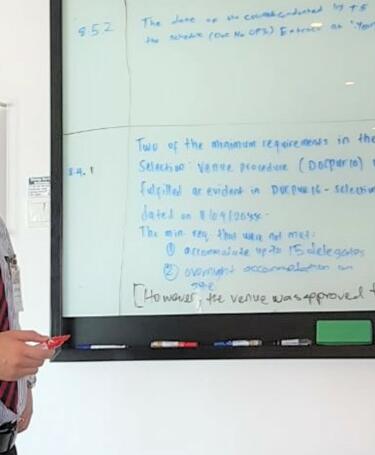
Taking the right action

Andy Lau, an IRCA Registered Lead Auditor, examines why implementing the right corrective action is more important than simply being seen to take action.
A common problem in today’s society is that it is often perceived as more important to be seen doing something, rather than showing the quality of the end result.
This is often true in the case of an audit. A company may spend a lot of time and money on the process to tick all the right boxes, but will it take the right action at the end of the process and act on the result?
We can ask ourselves, which way is best: firstly to be perceived as effective simply by being seen to spend a large amount of time on trying to achive an end result? Or would we be more effective by showing the results of what has been implemented, regardless of how much time was spent ‘being seen to be doing something’?
Correcting the root cause
Let us examine how this applies in auditing.
A non-conformity is issued from an audit finding. The auditee reluctantly accepts the finding raised by the auditor. The auditee proceeds to take action(s), without first working out with their team members what is the root cause of the problem.
The actions are implemented, which probably includes updating some documented information, sharing some information through email, and perhaps a notice board. The auditee tells the auditor that actions have been taken by showing the updated document. They also show a photo of the noticeboard and ask the auditor to close the non-conformity. The auditor reluctantly closes the non-conformity with these evidences provided as records.
Showing you have done something is not enough to prove that the action is effective.
At the next audit cycle, guess what? The same non-conformity is raised again. Once again, the auditee reluctantly accepts it and goes for the same round of documentation updating, followed by a notice on the notice board.
Some might say this is how things get done, because people need to be reminded from time to time. However, the most important part of this insanity is that no-one has asked the most fundamental question: is the corrective action effective in making sure the root cause of the problem was identified? If so, what action would then be taken to prevent it from happening again?
Act, don’t show
Once the root cause(s) has been determined, the organisation is required to test out its theory – is the root cause(s) determined valid or invalid. Valid means that, in all likelihood, the determined root cause is one of the valid reasons why the non-conformity occurred. Invalid, of course, means that it will not happen.
After the validity of the root cause(s) has been determined, the next step is to plan how to address the root cause(s). When the planned action is implemented, the organisation will then monitor the results of the implementation. This monitoring will tell if the cause of the non-conformity returns.
If it does not, then it has been proven that the action(s) taken are effective. If the action(s) taken still shows the cause(s) re-occurred, then it is proven that the action(s) taken are not effective. Therefore, it is back to the drawing board, with more brainstorming required.
So, please remember that showing you have done something is not enough to prove that the action is effective. Rather, the results of the action taken should tell you if the corrective action implemented is effective or otherwise.
Read more from Andy Lau
Andy Lau: 'Im an auditor, but I'm not sure if I'm auditing or inspecting'.